On Thursday, August 15th, I had the somewhat nerve-wracking experience of giving a presentation about an issue I’m passionate about concerning the arts to my fellow Future Producers. My chosen topic, women in the film industry (particularly women in the roles of director, producer and writer), seemed particularly relevant not only due to the current online discussions about the Blechdel Test, but also given the fact that many of the Future Producers are, like myself, women.
I have to say, it was a rather daunting prospect to present not only to my peers, but to also have my presentation recorded on camera, especially given the added pressure of being constrained to a time limit of roughly three minutes. I think we all know how difficult it is to self-edit when talking about something you are genuinely passionate about. however, with the help of my PowerPoint presentation (which, I admit, I have never used when presenting before), I had a rewarding experience. It is hard while presenting live to a group of people to garner whether or not they enjoyed the subject matter or your presentation style (I certainly find it hard to gauge, anyway), but my anxiety was alleviated by the great questions and feedback I received from the group; it just proved to me once more what a truly perceptive and intelligent bunch the Future Producers are.
I loved being challenged about whether or not there should be/are there marked differences in the ways filmmakers of different genders present the world. From my own perspective, I believe there don’t have to be marked differences because of a filmmaker’s gender, for indeed, men and women can have very similar and varied tastes to one another; I know men who enjoy rom-coms and women who love comic-book movies, for example. But to me it’s the fact that people of different genders will inevitably have different experiences because of their gender which will impact upon the way they see and present the world, just as one’s experiences can be influenced by geography and culture, along with many other influential factors. Even if these produce subtle differences in the cinematic presentation of the world the director or writer creates on camera, I still think it is important to view this perspective, as we are, after all, a world made up of both men and women.
I was also asked about what I thought should be done to encourage more women into film-making (or rather, what could be done by the major studios to encourage more women among their ranks). I have to admit, I am no expert on the technicalities of how films are made and produced (budgeting and funding are still something of an enigma to me), but I believe it really does come down to opening up new opportunities for women through funding and, perhaps most importantly, changing how women are perceived by the industry. It does seem that women are still viewed by their negative stereotypes as spendthrifts, push-overs and shrinking violets, and I think a lot of issues could be solved by funders and studios opening their eyes to the work that women are currently producing; which are, in fact, varied, interesting and award-winning pieces of film. Women have made a big impact on the independent film scene in recent years, and I think it’s time that the major studios realized the amazing potential their female peers have to offer.
James also asked an excellent question following my presentation via Facebook, which read “the generalization with Hollywood right now outside of the comic book blockbusters you’ve mentioned is the top ten lists and big money films that keep getting made are remakes, sequels, historical events and films based on best-selling novels…you also have big genre movies like action movies, comedies (often playing with gender), thrillers and CGI epics…so in terms of a business model how do [you] see the issue of getting more women involved in the film industry and directing when the demand is for these kinds of films that are often male dominated and cliches.” While I have to say I’m no business expert, as I have mentioned, I feel there’s a major, implicit misconception within the film industry (and, perhaps, within our culture as a whole) as to the capabilities of women and, indeed, their tastes. I think perhaps there needs to be an assessment and an awareness campaign among the powers that be within the major picture studios, who produce a lot of these films, focusing on what women can and already have done. A lot of the genres James highlights have seen many women produce successful and highly regarded films, though mainly with independent backing; films such as The Piano (historical drama, written and directed by Jane Campion), Twilight (best-selling novel adaptation, directed by Catherine Hardwicke), and Deep Impact (CGI epic and an action movie, directed by Mimi Leder). I think it is also a case of major studios perhaps being out of touch with their current audience; there is definitely a market out there for genre films aimed at a female audience that can be commercially successful. In fact, I believe there is a large female market already in existence for current films that fit into James’ highlighted genres; I myself love a good action movie, and the inner historian in me adores historical dramas (yes, even war dramas). Really, I think it comes down to the major studios being more aware of what’s out there. The evidence of female capabilities behind the camera for genre films, which could be more commercially successful with the big marketing budgets major studies have to offer, is already existent, and there should most certainly be less of a reliance upon the outdated assumptions that women do not enjoy or understand ‘boys film’ genres. One’s taste in films has, in my opinion, very little to do with one’s gender, but with one’s individual personality, and I think women have shown that they are perfectly capable of handling the direction of male-driven plots such as Deep Impact; after all, men have certainly been able to direct female driven plots in films such as Pride and Prejudice (Joe Wright) and Stoker (Park Chan-wook). Perhaps the best way to deal with this issue of women ‘breaking into’ the big budget, block-buster genre films from a directorial perspective is by explicitly increasing the awareness of the major film studios to the realities of women in the film industry, as well as the audience they appeal to in order to gain the commercial success they ultimately crave. The will is there among female filmmakers, they just need the way, and I think the way is by changing the widely held attitudes towards gender as opposed to a complete overhaul in the way films are produced. (However, I will add that the current practices of how films are produced, particularly in Hollywood, hold their own problems and issues. But that, perhaps, is another matter for further discussion elsewhere!)
I have to say, despite the nerves and anxiety, I really loved talking about something that truly ‘Gets My Goat’ within the arts to a group of young, astute creatives. What I have taken from the experience is that I’m not alone when it comes to these concerns for the future of women in the movie business; and what was so pleasing for me was that my male peers share and are sympathetic to this concern. If anything, it has encouraged me to explore the issue further as I aim to research more into the history of women in film and current opportunities available to female film creatives, including broader research into women in world cinema. If this is a profession I wish to be a part of, I better be prepared!
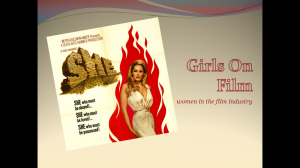
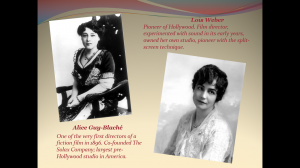
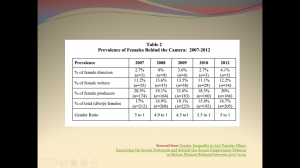
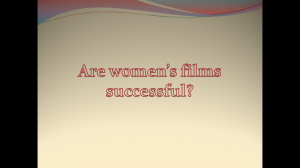
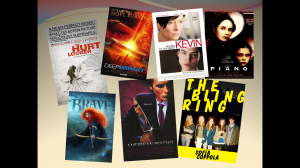
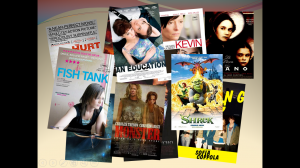
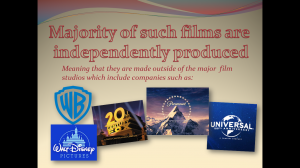
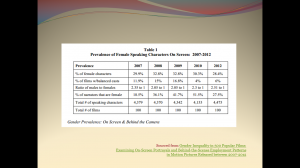
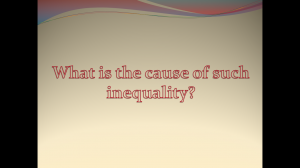
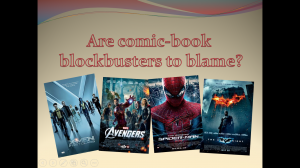
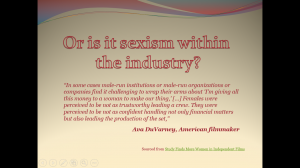
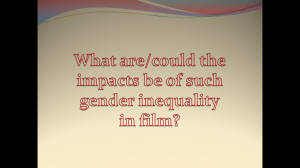
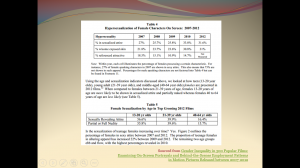
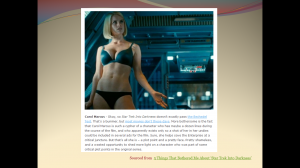
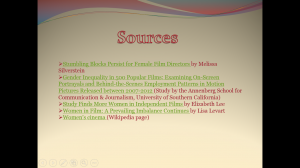
He Alex, Thought you might be interested in this little Info-graphic about inequality in Hollywood, pretty shocking stuff. God I love info-graphics though, they make information so easy to digest!
http://www.upworthy.com/and-the-winner-for-biggest-hint-that-hollywood-is-twisted-is?c=ufb1